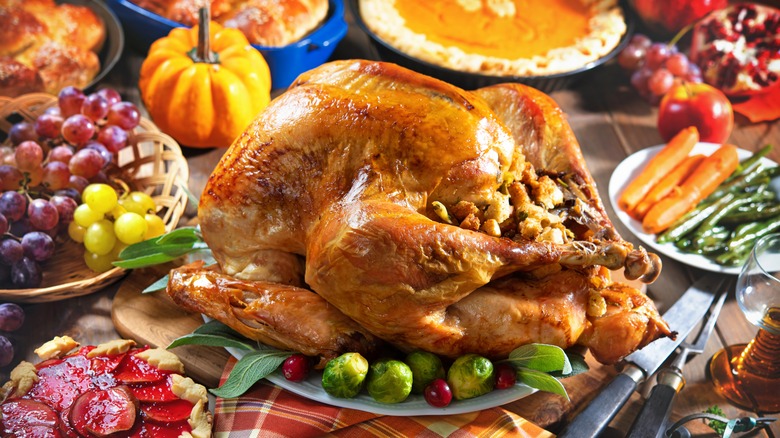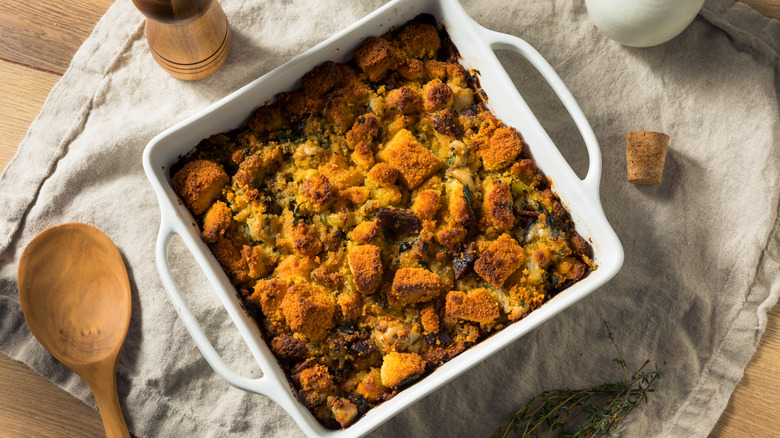The Seafood Used In Old-School Thanksgiving Stuffing
The fall season works up appetites for Halloween candy and Thanksgiving stuffing. All Hallows' Eve and its sweet treats have their own fascinating history, but where did the idea of stuffing bread and a bunch of other things into our turkeys come from?
According to Market Basket Foods, the answer is unclear. People were stuffing meat with herbs, nuts, veggies, and more as far back as 100 AD, if not earlier. As for turkey, stuffing (or dressing, as it's sometimes called) may have been used by pilgrims in the colonial era, for all we know, but there's no documentation of the stuff until the 19th century, per Arcadia Publishing. By the 1970s, though, stuffing/dressing was largely taken out of birds and made easy to cook via mass-produced, little-prep products sold at the store. Over the holiday, you may expect to see bread, fruit, nuts, spices, and veggies in your Thanksgiving Day stuffing, but what about seafood? It sounds untraditional, but it's not!
Oysters are a stuffing delicacy
Surprisingly, oysters work quite well in stuffing. This is due to the salty savoriness they bring to the dish without making it taste fishy. The bread naturally soaks up the oysters' liquid, too. It's an unexpectedly perfect match. All it takes is some raw, chopped oysters and their leftover moisture. Throw that in the mix, then bake! It doesn't even matter whether the oysters are fresh or canned — both taste good. Just keep in mind that you (or your fishmonger) will have to shuck the fresh ones, while the pre-canned oysters are pre-shucked (via Serious Eats).
While not as popular anymore, this stuffing ingredient was all the rage as recently as the early 1900s, according to Food52. This is because the New England coast had an abundance of oysters off its shores. Meanwhile, people in the heart of the country viewed them as a nautical delicacy to be imported for special occasions. So, they ended up in stuffing out of convenience and celebration alike. This trend goes back further than the 20th century, though. Oysters showed up in English recipes by the 17th century (per What's Cooking America) as documented in a 1685 cookbook. There, oysters and bacon were mixed with herbs and spices in a sauce, then stuffed into roasted hen belly.
Unfortunately, overfishing and pollution significantly hampered the oyster industry in the U.S. during the 1900s. So, this tradition mostly faded away. That's something we're not thankful for this holiday season!

